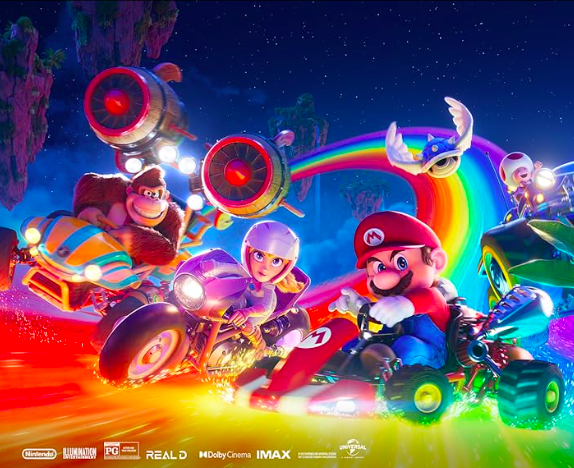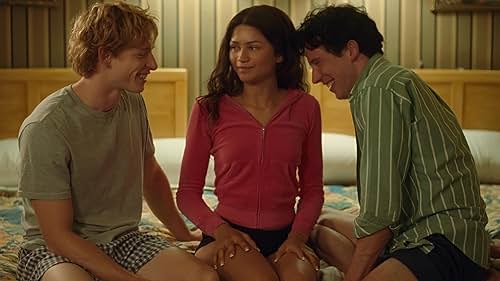As I watched “Ready Player One,” it was glaringly obvious how poorly the movie could have gone in the hands of the wrong director. Without a clear vision, the main character’s charm, the credibility of the plot and the organization of the visual effects would have all been in danger. Fortunately, “Ready Player One” had Steven Spielberg in command to bring a fountainhead of good decisions to the project. Spielberg almost perfectly adapts “Ready Player One” to the big screen and guarantees that the only way that you could not enjoy the movie is if you hate action adventures or happen to find something wrong with the central story itself.
Personally, I think the story contains plenty to love. “Ready Player One” is set nearly 30 years from now after civilization has drastically declined and the global population has retreated into a virtual reality, video-game world called the Oasis (which at the rate that my friends play Fortnite, does not actually sound too far-fetched).
The Oasis essentially allows people to be whoever they want and to do whatever they want. Users can spend their days watching old movies in a virtual theater or go on adventures with simulated pop culture icons. Because the possibilities in the Oasis are endless, references to other entertainment properties become the gimmick of “Ready Player One.”
But before the creator of the Oasis died, he hid three keys that can only be found by solving complex puzzles related to his past and completing difficult challenges. Whoever finds all three keys earns $1 trillion and total control of the Oasis. While some players have given up on finding the keys, others remain committed to the cause.
One devotee is a lover of all things 80s, Wade Watts (Tye Sheridan). Watts is a teenager living in Columbus, Ohio, where trailers are stacked as tall as skyscrapers. In the real world, Watts is a nobody but in the Oasis, he is a prestigious player with a wide social network that includes his best friend Aech (Lena Waithe).
When Watts begins to gain traction in the contest to control the Oasis, he raises alarms to new allies and enemies. His most dangerous adversary is an evil corporation run by the ruthless executive, Nolan Sorrento (Ben Mendelsohn). Sorrento’s empire has invested everything it has into winning the contest and purging the Oasis of its vital neutrality. With the help of old friends and a talented love interest, Artemis (Olivia Cooke), Watts fights to keep the Oasis out of the wrong hands. “Ready Player One” succeeds at establishing its stakes and giving weight to a virtual reality.
Sheridan’s depiction of Watts took me by surprise in a very good way. Part of his excellent performance comes thanks to the screenplay, which was written by Zak Penn and the author of the “Ready Player One” novel himself, Ernest Cline. The screenplay gives Sheridan some great lines to perform. Nonetheless, Sheridan also recovers the shortcomings of the movie’s script. Instead of allowing a rushed romance to make a relationship seem unnatural, Sheridan incorporates an insecurity into Watts that suggests that the character rushes things because he is inexperienced and immature. Watts is an excellent character with charisma and knowledge that justifies his leadership role in the story.
The supporting characters are also great. Cooke’s Artemis has a perfectly human motivation for winning the contest, and her competence as a player is impressive. Waithe’s Aech is both the coolest character in the movie and a delightful source of comic relief. Mendelsohn as Sorrento is usually great at balancing weakness and wickedness, but sometimes he becomes a little too cartoonish (literally). He is best when he subtly betrays that his character is unhinged.
Unfortunately, two side characters take away from the greatness of the movie. Simon Pegg plays a character who works at the company that runs the Oasis and while he is pretty good in flashback scenes, his performance as a jolly old Tycoon toward the end felt overdone. Even worse than Pegg was Sorrento’s sidekick, played by Hannah John-Kamen. She brought a campiness to the movie that was completely out of place.
Another problem with “Ready Player One” is that it does not really have anything to say. There is some social commentary at the end about how reality is real, but other than a brief moment between the characters where they enjoy the outdoors together, the message is extremely underdeveloped. I would have understood if “Ready Player One” wanted to exist only as entertainment but if this was the choice, then it could have left behind an uninspired attempt to make a statement.
Still, the storytelling in “Ready Player One” more than compensates for a couple peculiar characters and weak social commentary. “Ready Player One” artfully delivers each of its three acts and finds an effective symmetry between the scenes that take place in the Oasis and those set in the real world.
Up until the very end, the pacing in “Ready Player One” is exceptional. New information about characters and motives arrives at a comfortable rate with every detail eventually coming to a crescendo. Other than the obligatory voiceover narration that dominates the movie’s introduction, the methods of presenting information are not forced. The characters have intelligent conversations in which they figure out for themselves how to move forward.
Spielberg’s world-building is expert. In the opening segment, the camera smoothly navigates Watts’s Columbus trailer park to present a collection of eccentric characters wearing virtual reality headsets. Before Watts first enters the Oasis, he tests his equipment before putting it on, and the audience is given a taste of how the hardware is supposed to work.
Once we enter the Oasis, Spielberg and his creative team have a field day. The visual design is absolutely breathtaking — I felt like I was witnessing the future of video game graphics. The behavior of light in the Oasis perfectly matches the luminosity of the real world, but light always seems to come from the direction that makes for the best shot. Everything looks digital, but simultaneously, there is so much texture.
In the Oasis, the movement of the camera is limitless. Long shots follow the action closely and cuts are fairly rare. A racing sequence toward the beginning of the film rivals many cinematic experiences that I have had before. Similarly, there is an enchanting dance number in the middle act where the camera weaves over and under the characters in spectacular fashion.
Looking at the achievements of “Ready Player One,” the opportunities for failure seem obvious. If the characters were written to be dumb, audience surrogates, then they would no longer be interesting. If there was no clear vision for how to construct the Oasis, then the visual effects might have ended up inconsistent and if the director had not fully explored the vast filmmaking opportunities introduced by the Oasis, then the movie simply would not be special. These risks are possible with any movie but in the case of an adaptation, the chance of getting the stories or characters wrong seems especially high. Luckily, “Ready Player One” is the product of many good decisions. The result is not only a great film but some truly transcendent moments.
Dillon MacInnis can be reached at [email protected].



















